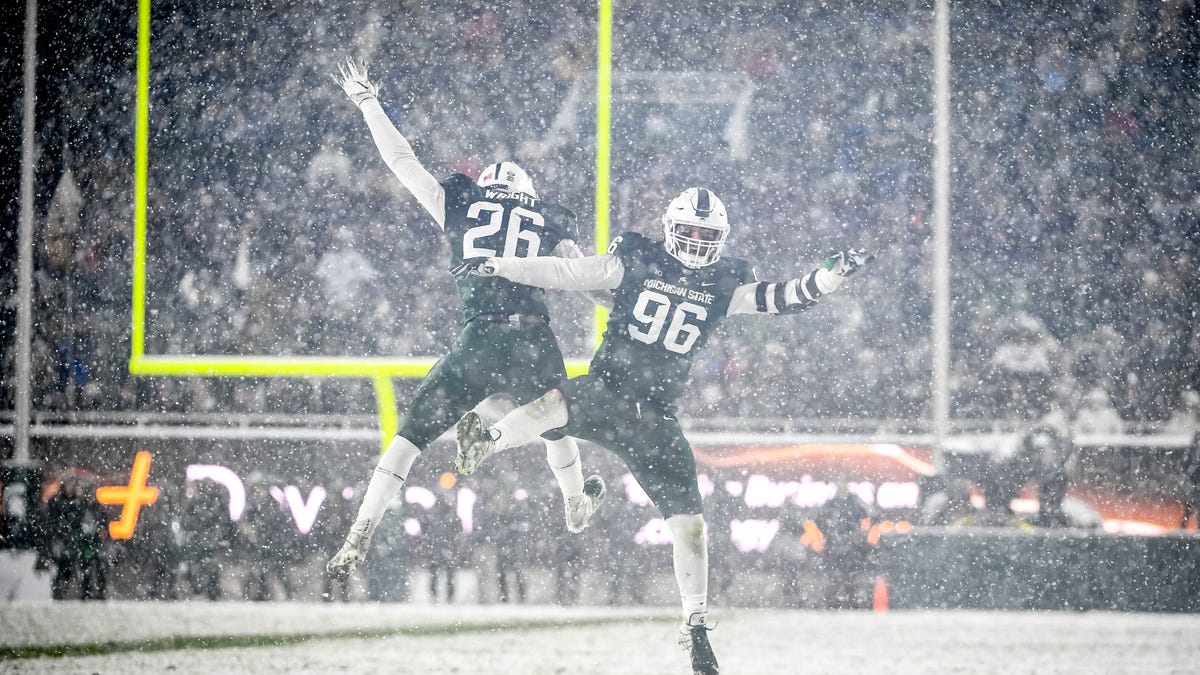Predicting the future NCAA landscape

As we approach an era where USC kicking off at 9 a.m. Pacific time in freezing November East Lansing temperatures is a very realistic and potentially biennial situation, let’s look at the options for college athletics going forward.
This move from USC and UCLA truly cannot be understated in its impact. The dust had largely settled from Texas and Oklahoma’s move to the SEC, as the Big XII was able to fill their spots with solid up-and-coming backup options, but this? This is, as my colleague Eric Blum (and before him, R.E.M.) put it, the end of the world — or, regional conferences, at least — as we know it.
The following scenarios revolve around the concept of football being the deciding factor in conference realignment decisions, which it largely has been so far. I understand that Duke and Kansas have a lot to offer in March, but come fall, they won’t make the cut.
Start your Pac-12 eulogies
Realistically, the Pac-12 doesn’t make it out of this. With regional loyalties so casually tossed aside, Washington, Oregon, and even Utah are now likely open to exploring other options if not eagerly shopping their programs around. The SEC, no longer the only conference with 16 teams, will likely be looking westward to expand (Manifest Destiny, anyone?) as well as eastward to Clemson, Florida State, and Miami. While only one of the three schools has seen consistent success in recent seasons, the brands and fanbases would be huge steals now that it’s a free-for-all.
If, say, Washington and Oregon head to the Big Ten and the SEC grabs Utah, the Pac-12 is left with a whole lot of nobodies. It becomes a Group of 5 conference at that point, and with their media rights deal expiring in 2024, they’re pretty much done for.
So there are a couple of options here. The remaining Pac-12 could effectively merge with the Big XII, remaining vaguely in the same region (mostly west of the Mississippi, at least), to create a third so-called superconference. But it wouldn’t be able to compete with the powerhouses in the Big Ten and the new SEC, and would remain the little brother with no signature brands.
Another option pops up if the ACC falls.
Et tu, Sankey?
If the SEC is able to pull two of the three ACC schools I mentioned, the ACC is also done for. Some schools — Duke, Louisville, North Carolina — will go running to the Big Ten, who will likely take them for their basketball programs and academic standards. Boston College would be accepted into the fray, as would Pittsburgh and Syracuse. It would essentially be divided at a coast-to-coast parallel line. Big Ten and Southeastern Conference would be gross misnomers.
At that point, the rest of the Big XII and Pac-12 schools would have to join one of the two major conferences lest they risk becoming a minor league within football, which would come at a huge cost to the universities’ bottom lines. Even Notre Dame will have to, at long last, finally join a conference.
This is the conclusion that many see as inevitable — two super-conferences monopolizing college sports with little regard for what that means for their non-football programs. One FOX deal, one ESPN deal, and that’s that.
But how will scheduling work?
Well, the way I see it, with conferences that would theoretically include 20 to 30 teams, you’d have to create divisions. Regional divisions, perhaps. The Big Ten West would be out in the Rockies. The SEC East would involve pretty much the entire existing SEC. Maybe the college football playoff looks like the east and west winners of both superconferences facing off and the winners of those playing for the national title.
This is, of course, incredibly ironic. While the money and exposure are at the center of a lot of these decisions, creating these divisions within superconferences would literally just recreate conferences in the way that they were meant to be: you mostly travel to other schools in your region, making it easy on the student-athletes, with a few big games across the country that draw in a more geographically diverse viewership.
This will be one of the funniest full-circle moments of all time, naturally.
What about a total restructure?
Another option — one that’s less likely to happen, seeing as there is no greater power in college sports aside from the NCAA, who doesn’t determine conference structure — would be a league of, say, 30 schools, in which the bottom four or six face regulation each year, and the top four or six of a secondary league would be up for promotion each year.
However, this would require a lot of people agreeing on a lot of things, something that the college sports world is famous for not being able to do (see: expansion talks). And none of these conclusions will see the light of day in full force for another few years, so for now, we’ve got to embrace the chaos. Countdown to 2022’s opening kick: 57 days.
For all the latest Sports News Click Here

